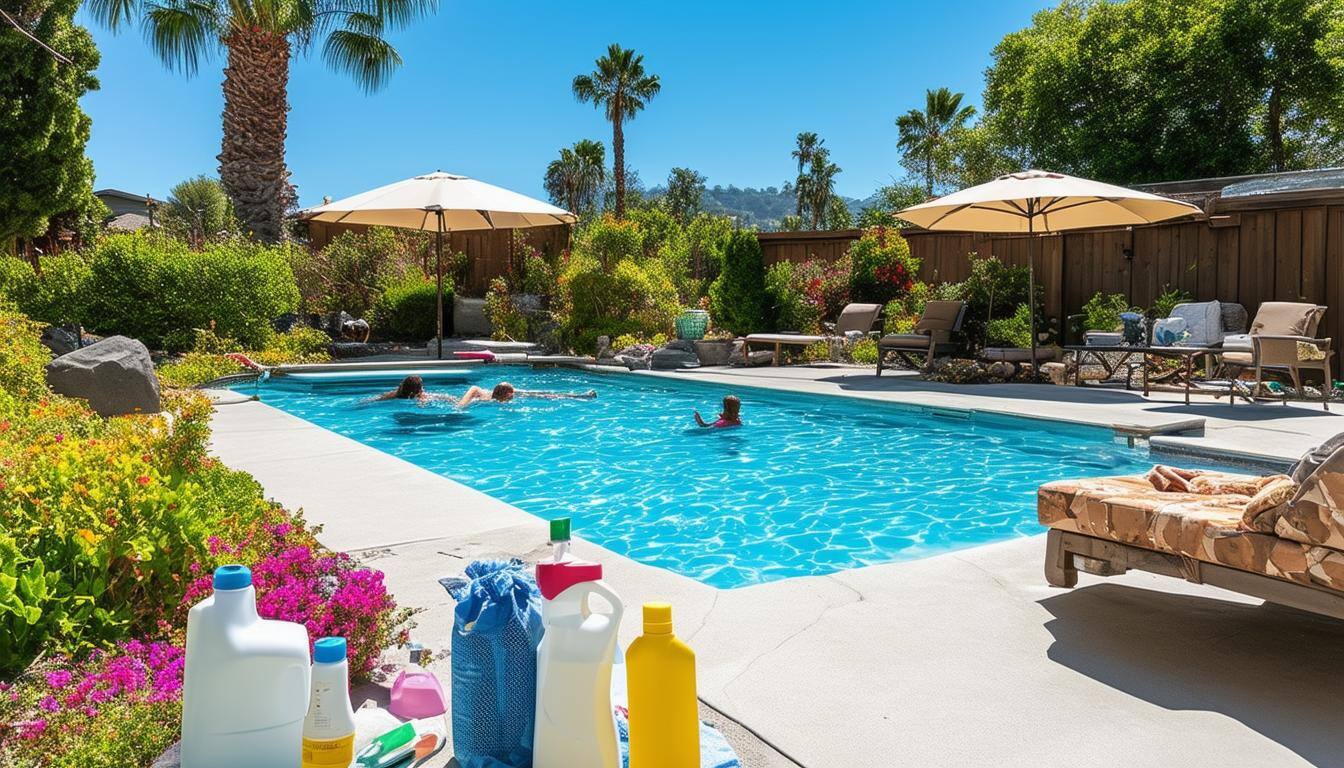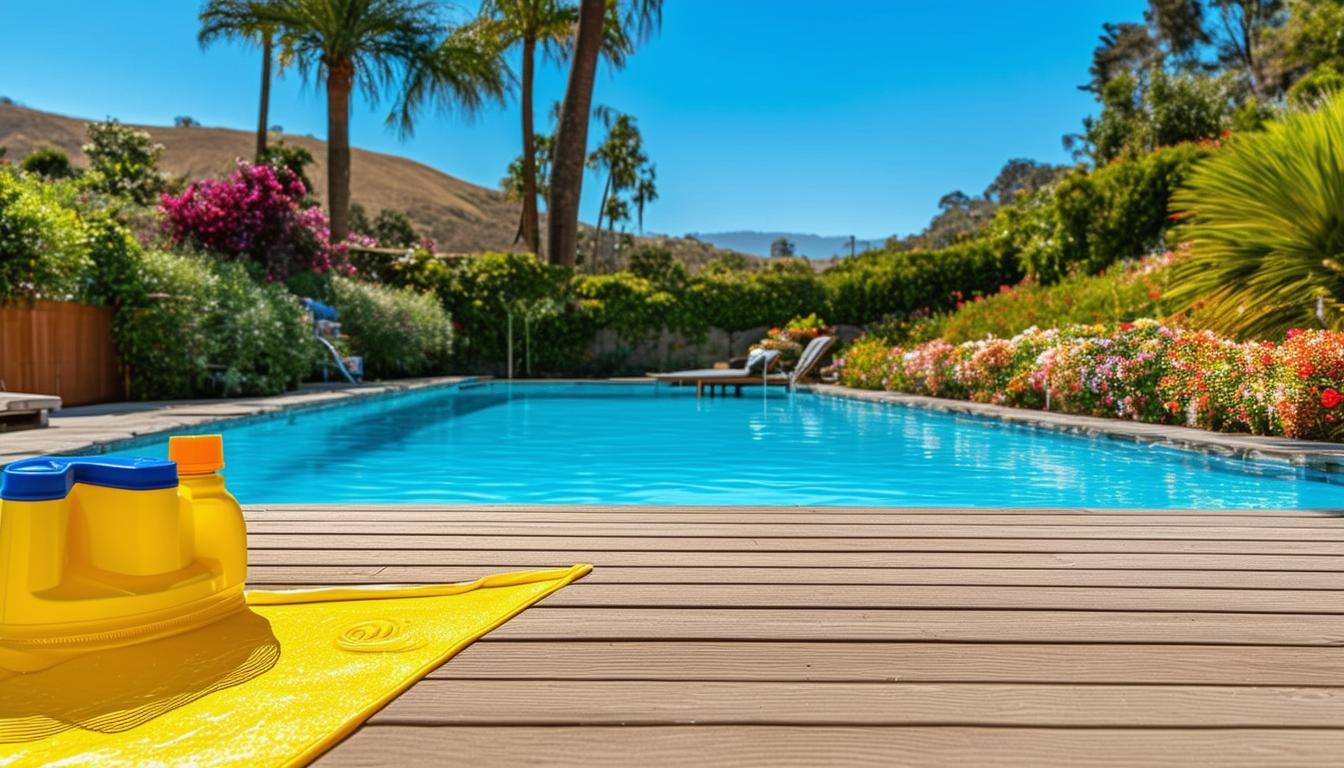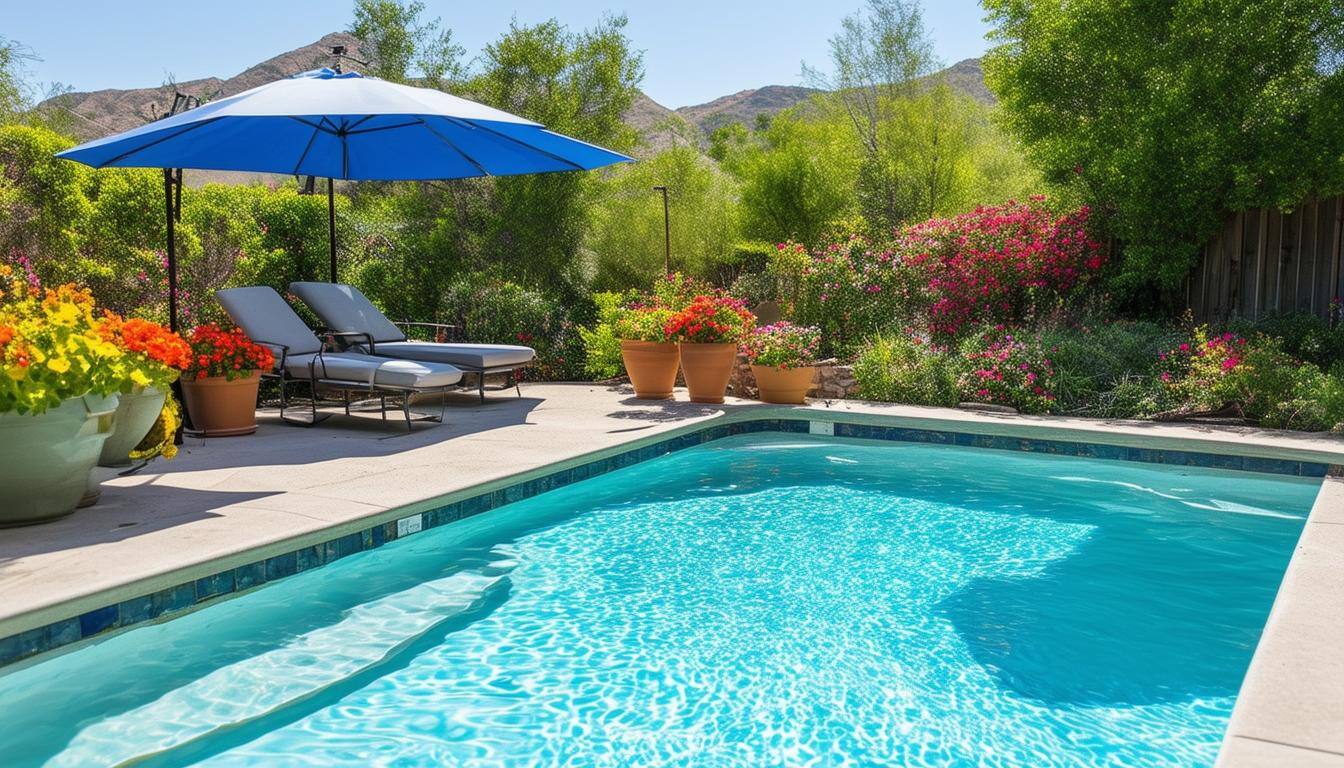Pool Chemistry Guide for Southern California: Tips for Clean, Safe Water

If you own a pool in sunny Southern California, you already know it’s one of the best ways to stay calm and enjoy the year-round warm weather. But owning a pool isn’t just about fun in the sun—it also requires regular maintenance to keep the water safe and sparkling. One of the most crucial aspects of pool maintenance is understanding pool chemistry.
In this blog post, we’ll break down the basics of pool chemistry, why it matters, and how the unique discussion of California climate plays a role.
Why Pool Chemistry Matters
Proper pool chemistry ensures:
- Safe Swimming Conditions: Balanced water prevents harmful bacteria and algae growth.
- Protecting Pool Equipment: Incorrect chemical levels can corrode pool components or cause scaling, reducing lifespan.
- Crystal-Clear Water: The right balance prevents cloudiness or discoloration, making your pool look inviting.
Key Components of Pool Chemistry
- pH Levels
- What It Is: A measure of how acidic or alkaline your pool water is.
- Ideal Range: 7.2 to 7.6.
- Why It Matters: Water that is too acidic can corrode equipment, while water that is too alkaline can cause scaling and cloudy water.
- Chlorine
- What It Does: Acts as a disinfectant, killing bacteria and algae.
- Ideal Level: 1.0 to 3.0 ppm (parts per million).
- Pro Tip: Southern California’s intense UV rays can break down chlorine quickly. To prolong its effectiveness, use a stabilizer like cyanuric acid.
- Alkalinity
- What It Is: Acts as a buffer to prevent sudden pH changes.
- Ideal Range: 80 to 120 ppm.
- Tip: Baking soda can be a cost-effective way to raise alkalinity levels.
- Calcium Hardness
- What It Is: Measures the level of calcium in your pool water.
- Ideal Range: 200 to 400 ppm.
- Why It’s Important: Low calcium levels can erode plaster, while high levels can lead to scaling.
- Cyanuric Acid
- What It Does: Protects chlorine from being broken down by sunlight.
- Ideal Range: 30 to 50 ppm.
- Warning: Excessive levels can reduce chlorine’s effectiveness, so test regularly.
Southern California’s Unique Pool Challenges
1. Year-Round SunlightThe constant exposure to sunlight accelerates chlorine breakdown. Consider using a pool cover when not in use to reduce UV exposure.
2. Hard Water
Southern California is known for its hard water, which means higher calcium levels. Regularly test and adjust calcium hardness to avoid scaling issues. To avoid scaling issues, periodically check the calcium hardness.
3. Drought Conditions
Water conservation is a priority in the region. Minimize the need to refill your pool by maintaining proper chemical levels and using covers to reduce evaporation.
4. Dust and Debris
Winds can bring dust, pollen, and debris into your pool, affecting water balance. A good skimming routine and proper filtration will help mitigate this.
Tips for Maintaining Pool Chemistry
1. Test Regularly: Use a reliable pool testing kit at least once a week.
2. Add Chemicals Gradually: Always follow manufacturer instructions and avoid overcorrecting.
3. Shock Your Pool: Do this weekly or after heavy use to eliminate contaminants.
4. Inspect Your Filtration System: A clean, well-functioning filter supports optimal water chemistry.
5. Work with Professionals: Consider hiring a pool maintenance expert to ensure your pool remains in top condition.
Conclusion
Keeping your pool water balanced doesn’t have to be overwhelming. By understanding the key components of pool chemistry and addressing Southern California’s unique challenges, you can maintain a safe, clean, and enjoyable swimming environment all year round.
Need help managing your pool? Contact a local pool maintenance professional or explore our tips for optimizing pool care. You can keep your pool looking and feeling great for years with a little effort!
Are you a pool maintenance company in Murrieta, Wildomar, or Temecula? Let us help you attract more local customers with targeted online marketing strategies! Contact us today for a free consultation.

